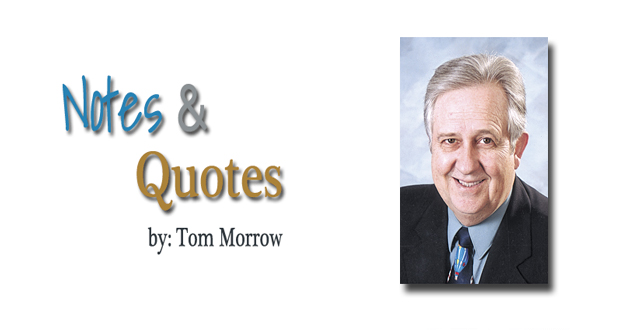The Nation’s Highway System ‘Ike’ Built
By Tom Morrow
If you could credit the person most responsible for our nation’s massive highway system it would have to be Henry Ford, but in reality it was President Dwight D. Eisenhower.
Early in the 20th century Ford made cars affordable for the average working man but there was a limited number of roadways in which to travel. Few roads in the Southwestern and Western states were nothing more than a two-track pathway cut through the landscape connecting one city or town with another.
In 1919 and 1920, two future U.S. presidents were involved in the development of our cross-country highway system. In 1920, the first major highway in the U.S. was built by the “Old Trails Road Association, a private organization that built a Missouri roadway connecting St. Louis and Kansas City. The Association’s president, at that time was Jackson County Judge Harry S. Truman of Independence, Mo. Later, in 1926, the Association determined road be split into several “numbered” highways throughout the nation. A portion of the “Old Trails Road” from Chicago to Los Angeles would later become the iconic U.S. Route 66.
The “Lincoln Highway” became the first coast-to-coast roadway running from New York’s Times Square to L.A. The Old Trails Association proposed automobile manufacturers donate 1 percent of their annual revenue to building the various national roads. All the major company heads complied except one … Henry Ford. He declared highways were the responsibility of the national government and not private enterprise.
In 1919, before there was any real organization connecting the West to the East, the U.S. Army mounted a car and truck convoy to travel the length of the new Lincoln Highway to determine viability of the road. The convoy was headed by Lt. Col. Dwight D. Eisenhower. Results of the Army’s mission encouraged Congress to pass the “Federal Aid Highway Act of 1921, which greatly increased matching state funds. Various states contributed to building and improving roadways connecting to the Lincoln Highway.

Eisenhower reported the Lincoln Highway through Pennsylvania, Ohio, and Indiana were in “fairly good shape,” much of it paved, but the roadway from Illinois on to the West, was mostly dirt. It became nearly impassable during bad weather, especially rain, leaving much of it little more than a deep two-rutted roadway.
Today, small sections of the old “Oregon Trail” cut by pioneers during the mid-1800s were still visible along the first westward path to the Pacific. Until roads were built in the various western states, the “Oregon Trail” often was used by early motorists, especially those driving tall-wheeled vehicles like Model T Fords.
After the Army convoy excursion, young Eisenhower (“Ike”) vowed to do everything he could to improve the nation’s roadways. Years later President Eisenhower would oversee the creation of our modern Interstate Highway system.
Today, much of the Lincoln Highway still exists as U.S. 30, which follows nearly the same route between Lincoln Park in San Francisco and Times Square in New York City. Much of U.S. 30 parallels Interstate 80.
The interstate idea was first conceived in Germany. The “autobahn” was started in the mid-1920s, but its construction did not make progress beyond the planning stage due to the Great Depression. One of the sections was planned as a “car-only road” crossing Germany from Hamburg south through Frankfurt then on to Switzerland. When Adolf Hitler became chancellor in 1933, sections were completed by the late 1930s and early 1940s, but construction eventually was halted because of World War II. Interestingly, the first autobahn section was completed in 1932 between Cologne and Bonn, officially dedicated on Aug. 6, 1932, by Konrad Adenauer, Lord Mayor of Cologne and future Chancellor of West Germany.

Today, the “Dwight D. Eisenhower National System of Interstate & Defense Highways,” using the German scheme as a network of controlled-access highways, connects most principal cities across the nation. The Interstate system extends throughout the contiguous United States and has routes in Hawaii, Alaska, and Puerto Rico.
After Eisenhower became president in 1953, his administration developed plans for the interstate system. Construction began in 1956, and was proclaimed completed in 1992. The cost of construction was approximately $114 billion (equivalent to $521 billion in 2018).
The Interstate system uses a numbering scheme in which primary Interstates are assigned one- or two-digit numbers and shorter routes are assigned three-digit numbers where the last two digits match the parent route. Example: Interstate 805 bypass for the I-8 and I-5 in San Diego.
One-quarter of all miles driven in the U.S. use the Interstate which has a network of 48,440 miles. Because of its heavy use, especially by truck traffic, the system is constantly under restorative construction.
Thanks to “Ike,” our lives have been greatly changed because of the Interstate … for both good and bad … good for travel, bad for the futures of many small town




